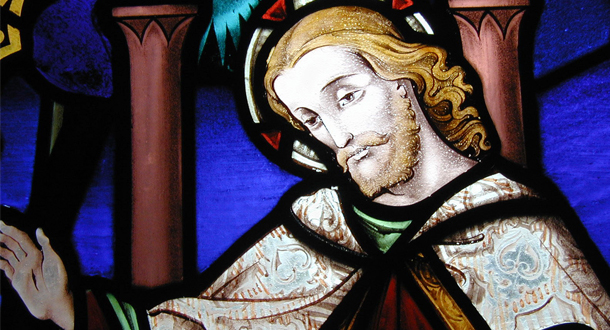
Scripture:
Reflection:
The reading today from Mark’s Gospel is the longest exorcism story in the New Testament. The driving out of demons probably strikes most of us today as strange, to say the least. But for the ancient world in which Jesus lived, the personified power of evil was viewed as a real threat that could wound and even destroy human life. In fact, in Mark’s Gospel exorcism is a characteristic action of Jesus’ mission. The first thing Jesus does in Mark’s account, is to liberate a man in the synagogue of Capernaum who was convulsed with “an evil spirit.”
Reading the account of the Gadarene demoniac brings us deeper into the dynamic force of Jesus’ mission. He and his disciples cross over the Sea of Galilee to Gerasa, a region in the Decapolis, a league of ten cities populated by Gentiles. As Jesus comes ashore a man possessed by a demon approaches him. Mark vividly describes the man’s plight: he lives among the tombs (the living dead); he is self-destructive, bruising himself with stones; he is out of control—breaking the chains and shackles that people had used to restrain him; and not surprisingly this poor tormented man cries out day and night in torment. Mark’s description puts in existential terms what being “possessed by a demon” meant—a human being isolated, ill, dehumanized.
This is the type of situation Jesus, the great healer and reconciler, the one filled with God’s own healing Spirit, has come to transform. The evil spirit recognizes what it is up against in confronting Jesus: “What have you to do with me, Jesus, Son of the Most High God? I adjure you by God, do not torment me!” But there is no question that the power of Jesus to heal is stronger than any evil. Jesus demands to know the demon’s name. “Legion is my name. There are many of us.” This is a fascinating detail of the story—the Latin word “legio” is the term used for the Roman army situated on the Golan heights close to where this story takes place. The oppression represented by the might of Rome choking the people of Israel was another existential example of what being tormented by evil felt like.
Jesus proceeds to liberate the man from his torment—sending the demon into a herd of pigs which rush down into the sea and drown. Of course, for the Jewish background of this story, pigs were an unclean animal and the sea was a fearsome place, a proper end for evil.
Most important in the story is the outcome. The man who was so de-humanized and wracked by suffering is now completely healed, “sitting there clothed and in his right mind.” A human being restored to life. When the people from the nearby village come to see what had happened, they are thunderstruck to find the man they had feared and isolated in the tombs now fully restored, and, as was often the case in the biblical world, they are overwhelmed by fear and awe of such divine power and plead with Jesus to depart from them. Not so the man who had been healed by Jesus. He pleads to stay with him. Instead, Jesus gives him a commission: “Go home to your family and announce to them all that the Lord in his mercy has done for you.” The man, liberated and thrilled, becomes the first Gentile missionary—going throughout the Decapolis region, proclaiming “what Jesus had done for him and all were amazed.”
Few stories in the Gospels match the drama of this event or more clearly reveal the mission of Jesus—and the mission of those who follow Jesus then and now. When confronting human suffering in all its forms, the Christian is to use God’s grace for healing and reconciliation. In a world still filled with suffering and injustice, the story of the Gadarene demoniac forcefully reminds us of our Christian responsibility.
Fr. Donald Senior, C.P. is President Emeritus and Professor of New Testament at Catholic Theological Union. He lives at the Passionist residence in the Hyde Park neighborhood of Chicago.
